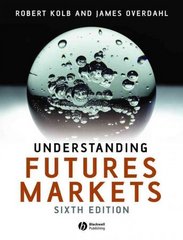What are the net present value and internal rate of return on this investment? The initial investment will be made on December 31, 2011, and cash flows will occur on December 31st of each succeeding year. Annual cash dividends to Philadelphia Composite from India will equal 75% of accounting income. The U.S. corporate tax rate is 40% and the Indian corporate tax rate is 50%. Because the Indian tax rate is greater than the U.S. tax rate, annual dividends paid to Natural Mosaic will not be subject to additional taxes in the United States. There are no capital gains taxes on the final sale. Natural Mosaic uses a weighted average cost of capital of 14% on domestic invest- ments, but will add six percentage points for the Indian investment because of perceived greater risk. Natural Mosaic forecasts on the rupee/dollar exchange rate as of December 31st for the next six years are listed next. R$$ R$$ 2011 50 2014 62 2012 54 2015 66 2013 58 2016 70 18.5 Doohicky Devices. Doohicky Devices, Inc., manu- factures design components for personal computers. Until the present, manufacturing has been subcon- tracted to other companies, but for reasons of quality control Doohicky has decided to manufacture itself in Asia. Analysis has narrowed the choice to two possi- bilities, Penang, Malaysia, and Manila, the Philippines. At the moment, only the summary of expected, after- tax, cash flows displayed at the bottom of this page is available. Although most operating outflows would be in Malaysian ringgit or Philippine pesos, some addi- tional U.S. dollar cash outflows would be necessary, as shown in the table at the top of the next page. The Malaysia ringgit currently trades at RM3.80/$ and the Philippine peso trades at Ps50.00/$. Doohicky expects the Malaysian ringgit to appreciate 2.0% per year against the dollar, and the Philippine peso to depre- ciate 5.0% per year against the dollar. If the weighted average cost of capital for Doohicky Devices is 14.0%, which project looks most promising? Problem 18.5: Doohicky Devices Doohicky Devices Doohicky in Penang (after-tax) Net ringgit cash flows Dollar cash outflows Doohicky in Manila (after-tax) Net peso cashflows Dollar cash outflows 2012 (26,000) 2017 10,000 2013 8,000 (100) 2013 190,000 (100) 2014 6,800 (120) 2014 180,000 (200) 2015 7.400 (150) 2015 200,000 (300) 2016 9.200 (150) 2016 210,000 (400) 2012 (560,000) 2017 200,000 What are the net present value and internal rate of return on this investment? The initial investment will be made on December 31, 2011, and cash flows will occur on December 31st of each succeeding year. Annual cash dividends to Philadelphia Composite from India will equal 75% of accounting income. The U.S. corporate tax rate is 40% and the Indian corporate tax rate is 50%. Because the Indian tax rate is greater than the U.S. tax rate, annual dividends paid to Natural Mosaic will not be subject to additional taxes in the United States. There are no capital gains taxes on the final sale. Natural Mosaic uses a weighted average cost of capital of 14% on domestic invest- ments, but will add six percentage points for the Indian investment because of perceived greater risk. Natural Mosaic forecasts on the rupee/dollar exchange rate as of December 31st for the next six years are listed next. R$$ R$$ 2011 50 2014 62 2012 54 2015 66 2013 58 2016 70 18.5 Doohicky Devices. Doohicky Devices, Inc., manu- factures design components for personal computers. Until the present, manufacturing has been subcon- tracted to other companies, but for reasons of quality control Doohicky has decided to manufacture itself in Asia. Analysis has narrowed the choice to two possi- bilities, Penang, Malaysia, and Manila, the Philippines. At the moment, only the summary of expected, after- tax, cash flows displayed at the bottom of this page is available. Although most operating outflows would be in Malaysian ringgit or Philippine pesos, some addi- tional U.S. dollar cash outflows would be necessary, as shown in the table at the top of the next page. The Malaysia ringgit currently trades at RM3.80/$ and the Philippine peso trades at Ps50.00/$. Doohicky expects the Malaysian ringgit to appreciate 2.0% per year against the dollar, and the Philippine peso to depre- ciate 5.0% per year against the dollar. If the weighted average cost of capital for Doohicky Devices is 14.0%, which project looks most promising? Problem 18.5: Doohicky Devices Doohicky Devices Doohicky in Penang (after-tax) Net ringgit cash flows Dollar cash outflows Doohicky in Manila (after-tax) Net peso cashflows Dollar cash outflows 2012 (26,000) 2017 10,000 2013 8,000 (100) 2013 190,000 (100) 2014 6,800 (120) 2014 180,000 (200) 2015 7.400 (150) 2015 200,000 (300) 2016 9.200 (150) 2016 210,000 (400) 2012 (560,000) 2017 200,000







